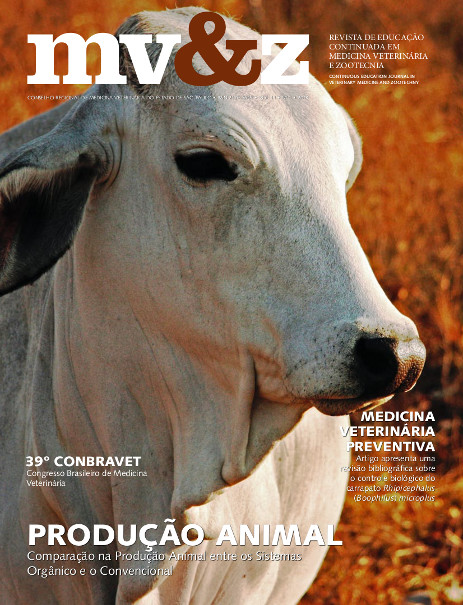Effects of amphibian skin secretion molecules on rabies virus infection in mammalian cells
Main Article Content
Abstract
Rabies is an acute infectious disease caused by a virus that affects the central nervous system, which mechanism of infection is associated to the cell penetration via the nicotinic acetylcholine receptor. The genus Bufo, recently split into Bufo in the Old World and Rhinella in the New World, contain a large number of alkaloids and steroids in their skin secretion. The aim of this study was to assay molecules extracted from the skin of amphibians as possible interfering agents in the process of infection of the rabies virus in mammalian cells. Bufo (Rhinella jimi) skin secretions were collected through mechanical stimulation. A liquid-liquid partition (H2O-CH2Cl2) was performed and the two resulting solutions were purified by RP-HPLC, in a C18 column. Structural characterization was performed by mass spectrometry. Cytotoxic tests of the isolated compounds were performed over BHK-21 cells. Briefly, 96- well microtiter plates containing the cells were incubated for 24h in the media containing different dilutions of the purified molecules. For the virologic test, fixed strain PV (Pasteur Virus) was used on fluorescence inhibition test and fluorescent foci inhibition test, with both simultaneous and time course treatment of the cells with the virus and the fractions. Sixteen fractions were obtained by RP-HPLC. The cytotoxic tests revealed that 9 fractions were toxic to BHK-21cells. On the virologic test, fraction 2 showed a lasting effect, independent from the simultaneous and time course treatments in both tests. Mass spectrometric analyses showed that this fraction contains a steroid named hellebrigenin. Fraction 14 was able to reduce rabies virus infection in both tests, apparently showing competition effects. Mass spectrometric analyses showed that this fraction contains two indole alkaloids, N`,N`- dimethyl 5-hydroxytryptamione (bufotenine) and N`,N`,N`-trimethyl 5-hydroxytryptamine (5-HTQ), which are currently undergoing purification. The two individual components will be retested for biological activity in order to evaluate which retains the biological effect so that more in depth assays can be performed.
Article Details
1. Autores mantém os direitos autorais e concedem à revista o direito de primeira publicação, com o trabalho licenciado sob a Creative Commons Atribuição-NãoComercial-SemDerivações 4.0 Internacional
2. Autores têm autorização para assumir contratos adicionais separadamente, para distribuição não-exclusica da versão do trabalho publicada nesta revista (ex.: publicar em repositório institucional ou como capítulo de livro), com reconhecimento de autoria e publicação inicial nesta revista.
3. Autores têm permissão e são estimulados a publicar e distribuir seu trabalho online (ex.: em repositórios instituicionais ou na sua página pessoal) a qualquer ponto antes ou durante o processo editorial, já que isso pode gerar alterações produtivas, bem como aumentar o impacto e a citação do trabalho publicado (Veja O Efeito do Acesso Livre);
